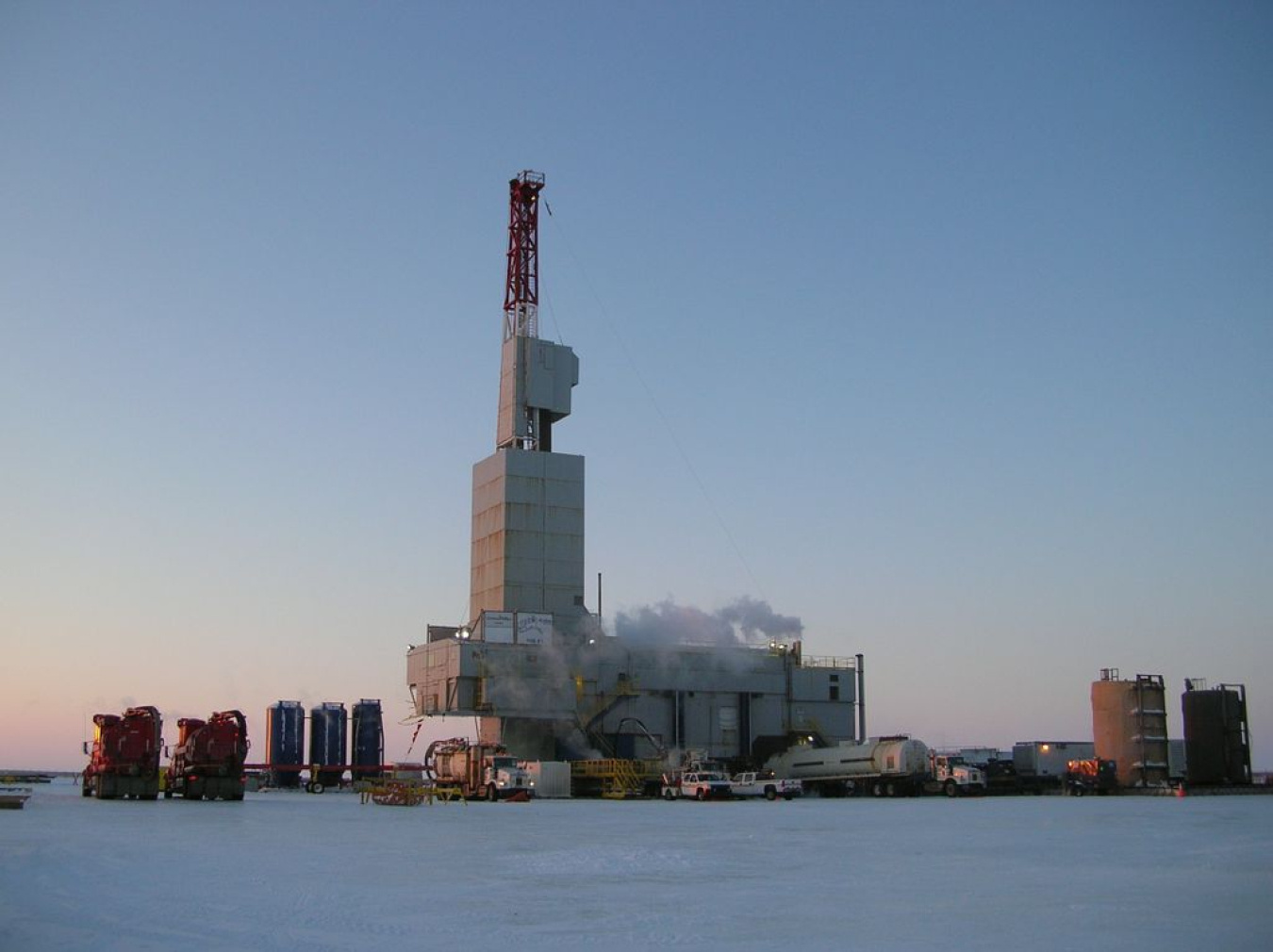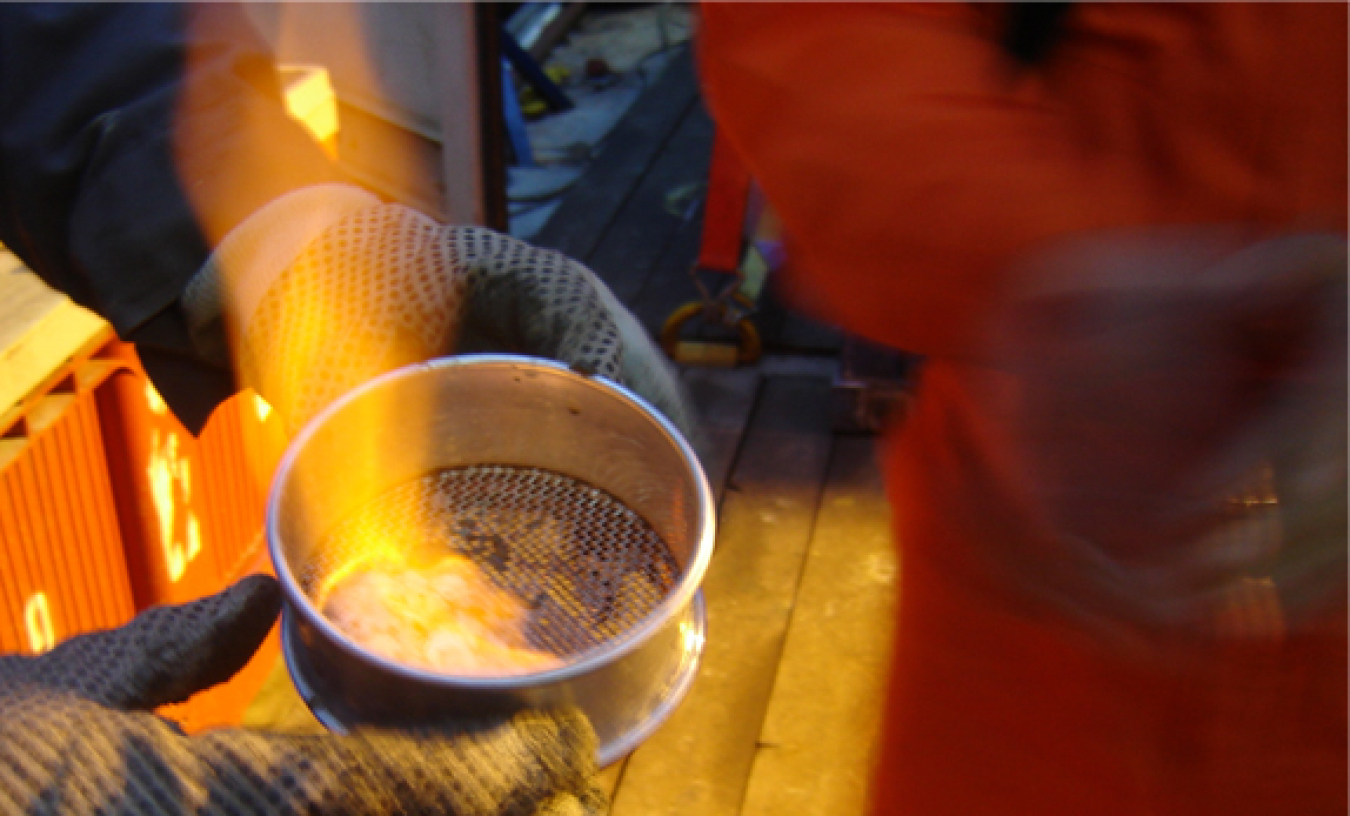
DOE participated in gas hydrate field production trials in early 2012 in partnership with ConocoPhillips and the Japan Oil, Gas and Metals National Corp at the Iġnik Sikumi (Inupiat for “Fire in the Ice”) test well, shown here, on the north slope of Alaska. Datasets from that field trial are now available to the public.

Gas hydrate is an ice-like solid that results from the trapping of methane molecules - the main component of natural gas - in a lattice-like cage of water molecules. Called the "ice that burns," this substance releases gaseous methane when it melts.
Washington, D.C. - Data from an innovative test conducted last year that used carbon dioxide (CO2) and nitrogen (N2) injection to release natural gas from methane hydrates at a well on the Alaska North Slope is now available to researchers and the public on the National Energy Technology Laboratory (NETL) website.
Methane hydrate – essentially molecules of natural gas trapped in ice crystals – represents a potentially enormous energy resource, possibly exceeding the combined energy content of all other fossil fuels. Hydrate resources in arctic sandstone reservoirs contain an in-place gas volume estimated to be in the 100’s of trillions of cubic feet (TCF), while hydrate in marine sands is estimated to contain 1,000’s to 10,000’s of TCF, and hydrate dispersed through marine mud is estimated to contain 100,000’s of TCF. In addition to the immense resource, CO2 injection into methane hydrate deposits is a technology that can potentially both release an energy resource while permanently storing carbon dioxide, a major greenhouse gas.
The U.S. Department of Energy (DOE), in partnership with other nations and industry, has played a leading role in developing technologies to evaluate how to safely recover these methane hydrate energy resources in order to provide new supplies of clean-burning natural gas. These resources occur in a variety of forms in sediments within and below thick permafrost in Arctic regions, and in the subsurface of continental waters with a depth of 1,500 feet or greater. The U.S. Geological Survey (USGS) has estimated a potentially recoverable resource of 85 trillion cubic feet of gas in favorable hydrate accumulations on the Alaska North Slope alone.
NETL, the research laboratory of DOE’s Office of Fossil Energy (FE), participated in gas hydrate field production trials in early 2012 in partnership with ConocoPhillips and the Japan Oil, Gas and Metals National Corp. (JOGMEC). This test well (known as Iġnik Sikumi, Inupiat for “Fire in the Ice”) represented the first test of a CO2 exchange technology that was developed by ConocoPhillips and the University of Bergen, Norway. In the test, a small volume of CO2 and nitrogen was injected into the well and then the well was produced back to demonstrate that this mixture of injected gases could promote production of natural gas.
The large volumes of raw data from the test are currently under evaluation. The data now available from the test program include the rates and composition of gases both injected and produced, and information on changes in the reservoir pressure and temperature during the test. ConocoPhillips has further augmented the raw data through extensive quality control checks and integration of the various measurements to a standard time framework. The data are now fully available to all researchers and the public for analysis and evaluation.
Both the U.S. and Japan have committed to utilizing Arctic gas hydrate research opportunities as an important step in assessing the potential for gas hydrate production in deepwater marine settings, the location of the vast majority of global resources. DOE and JOGMEC have also collaborated on the development of specialized core sampling devices through the Gulf of Mexico Gas Hydrates Joint Industry Project (an industry consortium managed by Chevron) conducting research on deepwater gas hydrate characterization technology.
In addition to the U.S./Japan collaboration, FE scientists have worked actively with researchers in Korea, India, China, Canada and other nations, as well as with USGS, the Bureau of Ocean Energy Management (BOEM), and other federal agencies, to advance methane hydrate technology. The Methane Hydrate Research and Development Act of 2000 established DOE (through the efforts of FE and NETL) as the lead U.S. agency for methane hydrate research and development.
<p>FECommunications@hq.doe.gov</p><p> </p>
